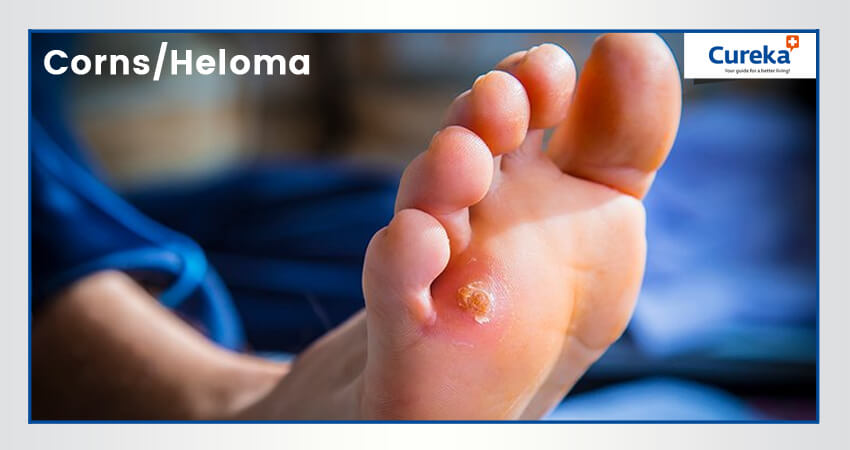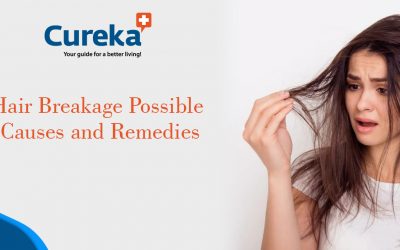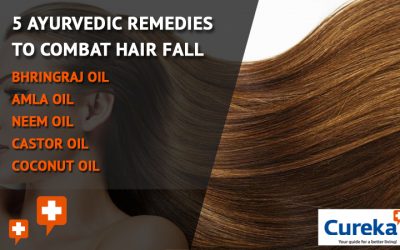Corns / Heloma
A corn is a common, uncomfortable thickened skin lesion resulting from repeated mechanical trauma due to friction or pressure forces. It is sharply demarcated area of traumatic hyperkeratosis.
Heloma (meaning a stone wedge in Greek) is the scientific term use by Podiatrists to denote corns.
Why Do Corns Ever Form?
Corns denote a protective body reaction that produces an excess of epithelial horny layer to prevent skin ulceration and injury. They present as flesh-coloured dry, hard, rough papules with a whitish visible translucent central core which presses deeply onto the dermis and causes pain and inflammation. They become painful on walking and standing but are asymptomatic on touching.
What Are The Common Causes?
Inappropriate shoes, abnormal foot deformities, abnormal gait, and high levels of activity may lead to corn. This can be also seen in athletes, patients who are exposed to unequal friction, elderly, diabetics, and amputees.
Corns are classified as hard, soft and seed corns based on their site and presentation.
• Hard corn or the digital corn represents the classical corn which is a dry horny mass most often seen over the interphalangeal joints.
• Soft corn occurs over the interdigital space and is extremely painful. Sometimes these may present with secondary fungal or bacterial infection because of maceration and sweat absorption.
• Seed corn manifests as multiple keratotic plugs in nonpressure-bearing areas of the soles and are painless.
Can Corns Be Confused With Viral Warts?
Corns should be distinguished from viral warts. Warts have a rapid onset, the skin lines pass around the lesion, and are painful on squeezing the lesion from side to side in contrast to corns; which develops over years, the skin lines may be observed within the corn lesions, and are painful on exerting pressure perpendicularly to a corn.
How Do We Treats Corns?
Most lesions can be managed conservatively by proper fitting footwear with low heels, roomy toebox and orthoses. Any mechanical trouble or deformity should be managed with an appropriate conservative treatment.
• Therapeutic padding: This involves proper soft cushion which reduce friction and improve comfort. Therapeutic padding can decrease the mechanical irritation over the corns and alleviate the symptoms. For hard corns, foam pads or silicone toe sleeves provide the cushioning and protection needed.
• Silicone sleeves also have an emollient effect and soften the lesion by slowly releasing mineral oil. And for soft corns, padding of the web space with a foam toe spacer can be helpful.
• Adhesive felt: Plantar corns caused by weight-bearing force on the metatarsal heads may be eliminated by accommodative metatarsal pads. Adhesive felt are used to transfer weight away from the painful area to the uninvolved areas of the foot. Felt padding can be applied directly on the foot or within the shoe.
• Topical keratolytic medications like salicylic acid upto a concentration of 40% as a pad or a solution can be applied to soften the corns. Topical urea, silver nitrate, and hydro colloid dressings can also be used. Topical keratolytic agents may also facilitate paring of the corns.
• Paring: Gentle paring without drawing blood with the help of scalpels can be done to reduce the pressure on underlying dermal nerves and alleviate the pain. One should be advised to trim the lesions at regular intervals using an emery board or pumice stone, after immersing the feet in warm water for few minutes.
• Ablative laser therapy may also be used to treat corns instead of paring them with a scalpel. The carbon dioxide laser has been used in such situations.
• Surgery is rarely indicated and is aimed at correcting the abnormal mechanical stresses, in case of failure of other conservative treatment modalities.
Management of corns begins with its prevention. We should avoid ill-fitting shoes and mechanical trauma to the affected area.











